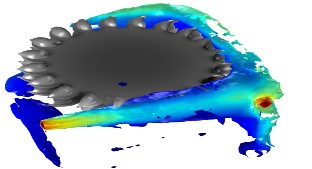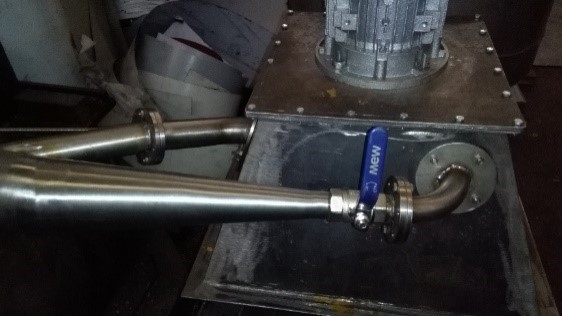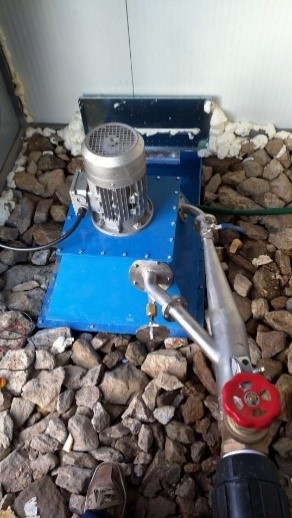Hídrica do Seixoso – Portugal
Hídrica do Seixoso – Portugal
An adapted pico Pelton turbine that uses a Tungsten mine reservoir to produce hydropower in Hídrica do Seixoso – Portugal:
A joint project developed by IST and IG energy with the support of REDAWN.
Now in operation, this installation is undergoing testing, but is already generating sustainable energy as an alternative to grid energy. Learn more and see drone footage below.
Development, application, field tests and CFD analyses
A new modified Pelton turbine coupled to a generator from Italian Pamor company, where instead of a 180 mm of diameter and new impeller with 220 mm and a 2-jet turbine, one adjustable and one fixed, was designed to support the flow jet of 5 l/s. As for the generator, a three - phasic motor was used, with a nominal power of 1,5 kW and 1400 rpm. The estimated net head is about 55 m, with a total hydraulic circuit length of 350m. Herein, a PEAD pipe with 3” of diameter using a reservoir created by a tungsten mine near a family home with 4 persons (a couple and 2 children) (Figures 1 to 3).
A digital survey was made based on satellite images with 1m spatial resolution (Figure 1). A pressure transducer to control the head (Figure 2 (a)) and a flow meter were installed. The flow measured was 5 l/s.
|
|
|
Figure 1 - Site location – general view (left); Pressure transducer and flowmeter (right) |
|
 |
 |
|
(a) |
(c) |
Figure 2- Turbine analyses: (a) CFD model building; (b) impeller and generator; (b) 2 nozzles
The generated three-phase current, without voltage or frequency regulation, is carried at a distance of 350 m, where it is rectified and supplies a solar inverter, connected to the internal circuit for its own consumption. Although the engine used as a generator is robust and capable of runoff speed, a dump load was attached to dissipate excessive power.
 |
 |
 |
Figure 3- Details of the installation |
||
Tests developed
Several tests are being developed to analyse the stability and performance of this micro hydro (Figure 4).
 |
 |
Figure 4 – Account device and energy production based on some field tests for January 2020.
Conclusions
Energy production depends on the water resource availability but in this case can be considered as an average per month of 1000 kWh, which results in a valuable source of local and sustainable energy. Additionally, this solution means the family will not need to buy energy from the electric grid, which corresponds to a saving of around 200€/month. Hence in an average year we could assume a micro hydropower production of 12000 kWh resulting in an annual benefit of 2400 €.
Considering the expenses associated with this micro hydro installation, Table 1 shows a description of all procedures/materials used.
Table 1 – Micro hydro installation
| Description | un | price (€) |
|---|---|---|
| turbo+generator | 1 | 2500 |
| inverter | 1 | 1500 |
| controller/rectifier | 1 | 500 |
| resistance dump load | 1 | 40 |
| peripheric of account device | 1 | 100 |
| cable LSVAV +- 3€/m | 350 | 1050 |
| pipe PVC +- 2€/m de 4kg e 3€ de 8kg | 350 | 950 |
| powerhouse | 1 | 500 |
| installation/ensemble/tests | 1 | 1500 |
| Total | 8640 |
Presenting a payback period of 3.6 years, this project reveals a promising solution to supply domestic homes or small stand-alone industries in remote places, using a component of the water sector to produce clean and renewable energy.



